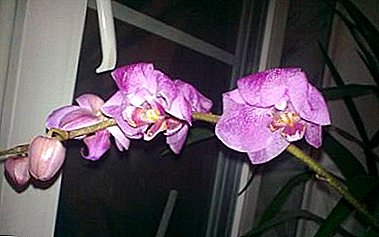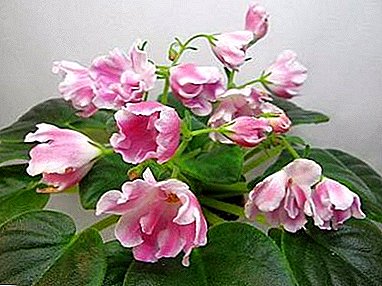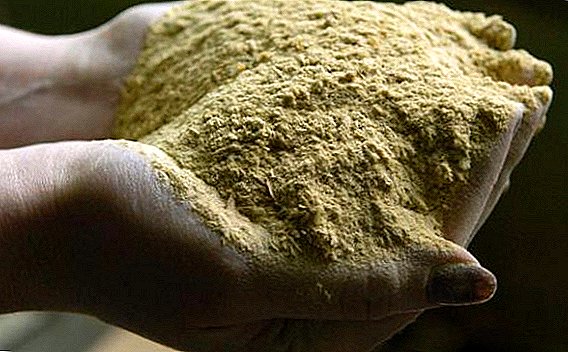
In comparison with other orchids, phalaenopsis is quite unpretentious, however, it is the violation of the rules of care that most often causes the wilting of the leaves and flowers of this plant. If the leaves turn yellow and become soft, and the flowers and buds wither and fall, this is a sure sign that something is wrong with the plant and you need to find out why this is happening and take immediate measures to rehabilitate it.
The process of withering is dangerous not so much because the leaves that are responsible for the photosynthesis process die off, but rather because they can be a sign of serious negative changes occurring with the orchid.
Why does this happen to a flower?
Before taking measures to save the deciduous plant, it is imperative to understand the reason; otherwise, any restoration measures can harm even more. In most cases loss of elasticity and yellowing of the leaves is observed as a result of the following reasons:
- excessive watering or stagnation of moisture in the substrate;
- insufficient watering and humidity;
- oversupply or improper use of top dressing;
- hypothermia or frostbite;
- overheat;
- compaction, rotting, or other changes to the substrate;
- root damage;
- parasites, mold.
If at the height of flowering orchids begin to wither and fall off the flowers, it is also a reason to analyze the possible causes of what is happening and try to respond as soon as possible.
The reasons in this case may be:
 the natural process of aging plants;
the natural process of aging plants;- strong drafts, proximity to the air conditioner, heater, open vent;
- stress from changing environmental conditions;
- excessive spraying or, on the contrary, insufficient air humidity;
- lack of lighting;
- excessive or insufficient watering;
- parasite infection.
There is no universal way to liven up sluggish orchid leaves and flowers.. If the cause of the disease is identified incorrectly, further actions may further weaken the damaged plant and lead to its death.
We offer to see an informative video about the causes of orchid decay:
What to do when wilting leaves and other parts of the plant?
As mentioned earlier, the methods of plant rehabilitation are directly dependent on the causes of its withering. Each case must be considered individually.
Overheating roots
Despite the fact that orchids come from hot tropical countries, being in direct sunlight, near a working battery or heater can be disastrous for them. When the temperature rises, moisture evaporates, as a result of which the plant does not receive a sufficient amount of liquid, the leaves become soft and shriveled.
When overheating is necessary:
- Immediately remove the orchid in the penumbra, away from heating devices;
- do not water or spray until completely cooled (for at least 2-3 hours);
- if after a few hours the leaves began to rise, water it;
- if the damage has been severe and the plant has not begun to recover on its own, more serious measures should be taken, including the removal of damaged leaves.
Important! In extreme heat, do not spray orchids. Watering should be done carefully, preferably when the temperature drops, for example, after sunset.
We offer to see an informative video about orchid overheating:
Excessive watering and moisture
 With excessive watering, the substrate does not have time to dry out, which leads to rotting of the roots, as a result, healthy roots do not cope with the needs of the plant, the orchid does not receive a sufficient amount of water and minerals. Sooner or later, it will always lead to wilting of the leaves and shoots. The rot can spread to the aboveground part of the flowerafter which it will be almost impossible to save him.
With excessive watering, the substrate does not have time to dry out, which leads to rotting of the roots, as a result, healthy roots do not cope with the needs of the plant, the orchid does not receive a sufficient amount of water and minerals. Sooner or later, it will always lead to wilting of the leaves and shoots. The rot can spread to the aboveground part of the flowerafter which it will be almost impossible to save him.
To prevent this from happening, you must take the following steps:
- carefully remove the orchid from the substrate;
- wash the roots with warm water;
- remove damaged areas of roots to healthy tissue;
- process cuts with crushed activated carbon or antistatic; root can also be used;
- leave the flower to dry for 8-10 hours;
- transplant the orchid in a new dry and more loose substrate, the drainage layer should be at least 2 cm.
Phalaenopsis orchids should be watered only after the substrate is completely dry., it is possible to determine the need for watering by the color of the roots: the moisture-saturated roots are bright green in color, and the dried ones are gray.
Next, an informative video about excessive orchid watering:
High concentration of fertilizer
Before using any fertilizer, you should carefully read the instructions for its use and follow it strictly, otherwise there is a high chance of bringing more harm than good to the plant. When the damage has already been done, first of all you need to immediately abandon the further feeding. If after some time it does not bring results, it is necessary to transplant the flower into a new clean soil.
Substrate compaction
On average, every 2-3 years phalaenopsis must be transplantedThis is due to the natural growth of the root system and the deterioration of the quality of the substrate. Over time, the potted soil begins to thicken, while natural ventilation of the orchid's roots ceases, and excess fluid remains inside. As a result, the roots and the substrate begin to fester. The only solution to this problem is to transfer the orchid to a new soil, and in the process it is necessary to remove the damaged roots.
Stress
 With a sharp change in external conditions (for example, moving) the plant is under stress, it needs time to adapt before the orchid can return to its normal life cycle.
With a sharp change in external conditions (for example, moving) the plant is under stress, it needs time to adapt before the orchid can return to its normal life cycle.
In this case, it is enough to create comfortable conditions for the flower:
- sufficient illumination;
- air humidity (60-80%);
- timely watering;
- comfortable temperature (+20 - +28 degrees);
- moderate top dressing.
Hypothermia (frostbite)
If the air temperature drops below +15 degrees, Phalaenopsis has every chance of getting hypothermia.. This plant is very sensitive to temperature changes and even a short-term decrease in it can lead to wilting of the leaves. Frozen leaves lose their elasticity and acquire a dark green shade, they are not subject to recovery. Damaged leaves must be removed, sections must be treated with an antiseptic or activated carbon powder.
We offer to see in the video how orchids suffer from hypothermia:
Draft
Orchids are useful daily airing., but a constant draft from an open window or a working air conditioner can lead to hypothermia and wilting of flowers and even leaves. The only solution in this case is to remove the flower from the blown place.
It is contraindicated to carry out airing immediately after watering or spraying, as this may lead to additional hypothermia.
We offer to look at the video that happens to the orchid under the influence of the draft:
Insufficient watering and humidity
 Phalaenopsis is a tropical plant and extremely sensitive to insufficient moisture.. In the absence of moisture, the roots are unable to nourish the leaves and they become sluggish and gradually dry out. Insufficient watering also leads to the fact that the plant does not receive the minerals in the substrate, as it is possible to absorb them only with moisture. In the early stages of wilting, it is enough just to normalize the watering to prevent further drying.
Phalaenopsis is a tropical plant and extremely sensitive to insufficient moisture.. In the absence of moisture, the roots are unable to nourish the leaves and they become sluggish and gradually dry out. Insufficient watering also leads to the fact that the plant does not receive the minerals in the substrate, as it is possible to absorb them only with moisture. In the early stages of wilting, it is enough just to normalize the watering to prevent further drying.
Excessive watering will not help the weakened plant to recover and may lead to decay and death of the plant.
In that case, if the lack of moisture has caused serious damage to the plant, the following measures should be taken:
- remove the orchid from the pot;
- place in a container with warm water for 30-40 minutes;
- make sure that the leaves do not touch the water;
- remove from the water and carefully examine the root system;
- remove damaged roots to healthy areas, may also need to remove some of the damaged leaves;
- process cuts;
In the future, the plant will need timely watering and moderate fertilizing.
When the plant is no longer save?
In especially advanced cases, when the problem was not detected and solved in a timely manner, it may no longer be possible to bring the flower back to life.
If serious damage to the root system has occurred, as a result of which most of the roots have died, or when decay and mold have spread to the aboveground part of the plant and have led to large-scale damage, there is almost no chance of saving the orchid.
How to prevent wilting?
 Only proper care can prevent the orchid from fading.:
Only proper care can prevent the orchid from fading.:
- Daylight hours for phalaenopsis should be at least 10-12 hours. If necessary, the lack of natural lighting can be compensated by artificial.
- Temperature drops greater than 5 degrees are not allowed, and it should not fall below +15 or rise above +30.
- The preferred air humidity for orchids is 60-80%. Except for the flowering period, Phalaenopsis can be sprayed up to 5 times per day.
- Timely watering. On average, orchids need to be watered by immersion once a week, while it is imperative to monitor the drying of the substrate.
- During the flowering period, it is necessary to fertilize the orchid twice a month, at other times as necessary.
Observance of these simple rules will prevent the orchid from withering and will enable it to adapt to our climate, which is not so similar to its native. Careful attention to tropical beauties will make it possible to timely notice the first signs of indisposition and take the necessary measures before the process becomes necessary.


 the natural process of aging plants;
the natural process of aging plants;









